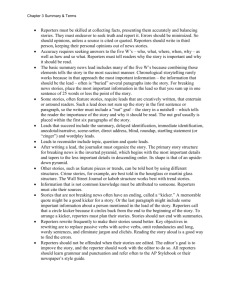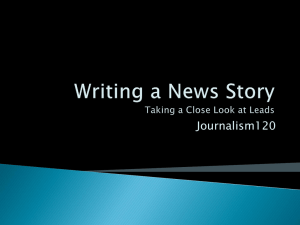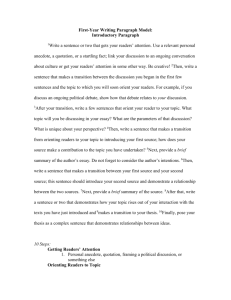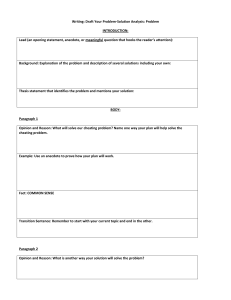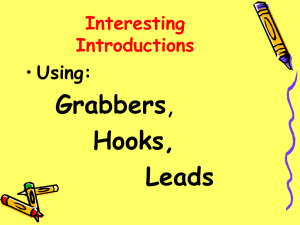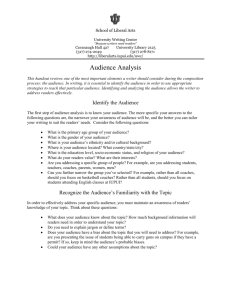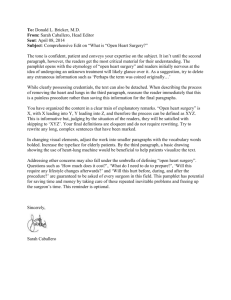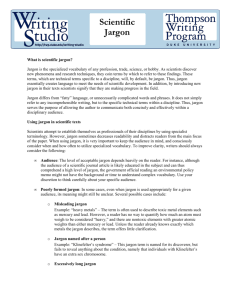File
advertisement
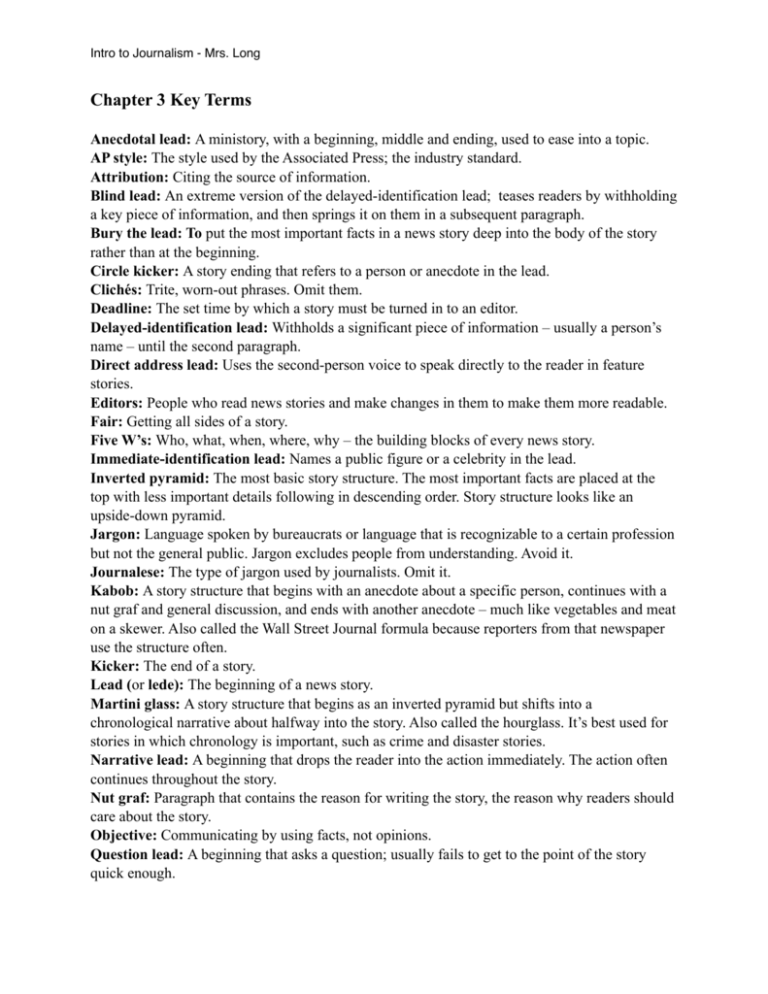
Intro to Journalism - Mrs. Long Chapter 3 Key Terms Anecdotal lead: A ministory, with a beginning, middle and ending, used to ease into a topic. AP style: The style used by the Associated Press; the industry standard. Attribution: Citing the source of information. Blind lead: An extreme version of the delayed-identification lead; teases readers by withholding a key piece of information, and then springs it on them in a subsequent paragraph. Bury the lead: To put the most important facts in a news story deep into the body of the story rather than at the beginning. Circle kicker: A story ending that refers to a person or anecdote in the lead. Clichés: Trite, worn-out phrases. Omit them. Deadline: The set time by which a story must be turned in to an editor. Delayed-identification lead: Withholds a significant piece of information – usually a person’s name – until the second paragraph. Direct address lead: Uses the second-person voice to speak directly to the reader in feature stories. Editors: People who read news stories and make changes in them to make them more readable. Fair: Getting all sides of a story. Five W’s: Who, what, when, where, why – the building blocks of every news story. Immediate-identification lead: Names a public figure or a celebrity in the lead. Inverted pyramid: The most basic story structure. The most important facts are placed at the top with less important details following in descending order. Story structure looks like an upside-down pyramid. Jargon: Language spoken by bureaucrats or language that is recognizable to a certain profession but not the general public. Jargon excludes people from understanding. Avoid it. Journalese: The type of jargon used by journalists. Omit it. Kabob: A story structure that begins with an anecdote about a specific person, continues with a nut graf and general discussion, and ends with another anecdote – much like vegetables and meat on a skewer. Also called the Wall Street Journal formula because reporters from that newspaper use the structure often. Kicker: The end of a story. Lead (or lede): The beginning of a news story. Martini glass: A story structure that begins as an inverted pyramid but shifts into a chronological narrative about halfway into the story. Also called the hourglass. It’s best used for stories in which chronology is important, such as crime and disaster stories. Narrative lead: A beginning that drops the reader into the action immediately. The action often continues throughout the story. Nut graf: Paragraph that contains the reason for writing the story, the reason why readers should care about the story. Objective: Communicating by using facts, not opinions. Question lead: A beginning that asks a question; usually fails to get to the point of the story quick enough. Intro to Journalism - Mrs. Long Quote lead: A beginning that is a direct quotation; fails to summarize what happened. The quote states an opinion, not a fact, and readers don’t know who is speaking. Roundup lead: A beginning that presents a list of things or events that happened. Scene-setter lead: A beginning that describes sights, sounds and smells to transport the reader to another place; usually reserved for long feature stories as it lacks the urgency of the hard-news lead. Sidebar: A short story written to accompany a longer story. Startling statement (or zinger): A sentence that grabs readers’ attention with an astonishing fact or piece of information, daring them to continue reading. Style: (1) The way a person writes. (2) The rules that govern punctuation, capitalization and word usage. Summary lead: A beginning that combines the most significant of the five W’s into one sentence; used in the majority of news stories. SVO sentences: Sentences written in subject-verb-object order. Example: Jane (subject) threw (verb) the ball (object). Topic lead: A beginning that states only that an event occurred, without including the outcome; fails to convey the news. Wordplay lead: The use of puns, sound effects, typography or witticisms to begin a story.
